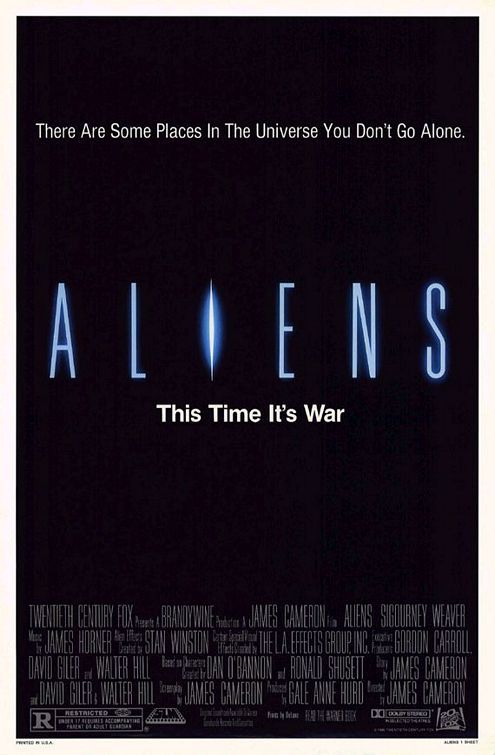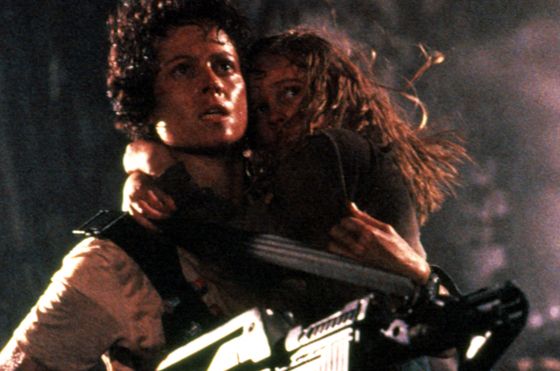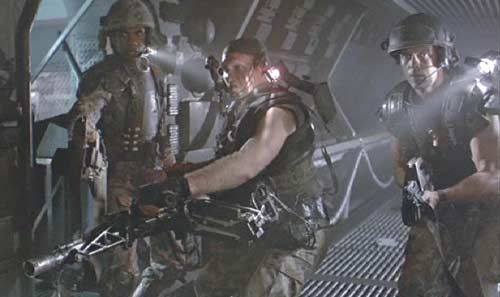
I may have said this before, but it bears repeating: there was a time when sequels were not foregone conclusions. People like a good serial, to be sure, but not every entry into a genre is going to become a bestselling franchise. These days sequel hooks are practically a requirement as part of the conclusion of a story. Having one person survive a horrific ordeal doesn’t necessarily qualify as a sequel hook, but it does have the advantage of concluding the original story in a satisfying way while leaving the door open for a new story to pick up where the original ends. Such was the case in 1986 when Ridley Scott’s Alien was followed by James Cameron’s Aliens.

Of the events aboard the ill-fated Nostromo, there were two survivors: Warrant Officer Ripley and Jones, the ship’s cat. Rescued by a salvage team as the Nostromo’s shuttle drifted through space, Ripley is awakened from cryonic stasis to find 57 years have elapsed and she has no evidence of the unknown attacker that savaged her crew and forced the destruction of her ship. The company revokes her flight status and tell her that if such creatures exists, the 50-60 families that colonized the planet her crew landed on would have said something, right? When the company loses contact with the colony, they tap Ripley to accompany a team of Colonial Marines sent to investigate. They have military training, superior firepower, plenty of attitude… and are completely unprepared for what awaits them.
This film is a significant tonal shift from the original Alien. Ridley Scott’s film is a claustrophobic and shockingly intimate descent into nightmare, while Cameron’s plays more as a sci-fi action yarn with horror elements. Even so, there is a coherence in aesthetic that keeps the stories feeling closely related beyond threads of the plot. Despite not taking as much time to expound on every character involved, Aliens still contains the close environments and elements of tension that make the original memorable to this day. In other words, it does what a sequel needs to do in order to be a true success: it holds true to the original while expanding the scope of the story.

It’s all about girl power.
While many action films draw their power from the decidedly male side of things, Aliens also continues the tradition of not only having a female lead, but playing on rather feminist themes. Alien dealt very much with rape and bodily violation (even if it was interspecies) while Aliens focuses on female empowerment and motherhood. From the smart-gun wielding take-no-prisoners Vasquez to the dropship pilot Ferro, women are seen comfortably holding positions of power and performing jobs with distinction. Ripley herself continues to grow, showing a great deal of depth and complexity along with the ingenuity and bravery that got her through the first encounter. This isn’t to say the men are marginalized by any stretch. Michael Biehn and Lance Henriksen turn in great performances, and Al Matthews’ Sergeant Apone is quite memorable, serving as the template for future Marine sergeants in places like Halo. Carrie Henn turns in one of the most effective child performances I’ve ever seen. Finally, Aliens pulls off the feat of making everybody want to punch quintessential nice guy Paul Reiser in the face. Though I’m sure those who didn’t like the TV show Mad About You wouldn’t need his role as a sleazy corporate douchecanoe to add to their incentive.
In addition to its cast being well-rounded and progressive rather than running entirely on machismo, Aliens seems to have something to say about the nature of asymmetrical warfare. Here we have a team of highly-trained well-armed soldiers plunging headlong into an environment they know little about, trusting their high-tech weaponry to prevail over whatever’s in their path. But the enemy is something they’ve never encountered before. They are belligerent and numerous. They exist in a setting that is unnerving and (let’s face it) alien to the Marines, and they use the enemy’s ignorance to their advantage. They conceal their numbers, they strike without warning, and their methods are brutal and inhumane. This setup could be used as a metaphor for quite a few of America’s wars, though Cameron had Vietnam in mind when he was making the film.

Oo-rah.
All the same, it goes without saying that Aliens is decidedly less frightening than Alien. There are elements of horror, to be sure, mostly in the form of jump-out scares, but given the expansion of the cast, the shift in focus, and the presence of so many automatic firearms, this should come as no surprise. It does have tense moments, though, exemplified in the Special Edition scene involving the sentry guns. It’s funny to me that 20th Century Fox said this scene showed “too much nothing” when building tension in a movie like this is essential to its success. I guess it shows what studio executives know about storytelling.
No matter what edition you see it in, Aliens is definitely worth watching. It’s solid construction comes from being built on the great foundation of Alien and it wisely finds ways to expand its scope without sacrificing what worked the first time around. A strong female lead, great character beats all around, and the visual aesthetic of a sci-fi action director who would become one of the best in his field contribute to make a memorable film that may other movies and several first-person shooters would borrow heavily from for decades. It’s a great mix of fun and frightening.
Josh Loomis can’t always make it to the local megaplex, and thus must turn to alternative forms of cinematic entertainment. There might not be overpriced soda pop & over-buttered popcorn, and it’s unclear if this week’s film came in the mail or was delivered via the dark & mysterious tubes of the Internet. Only one thing is certain… IT CAME FROM NETFLIX.



Leave a Reply